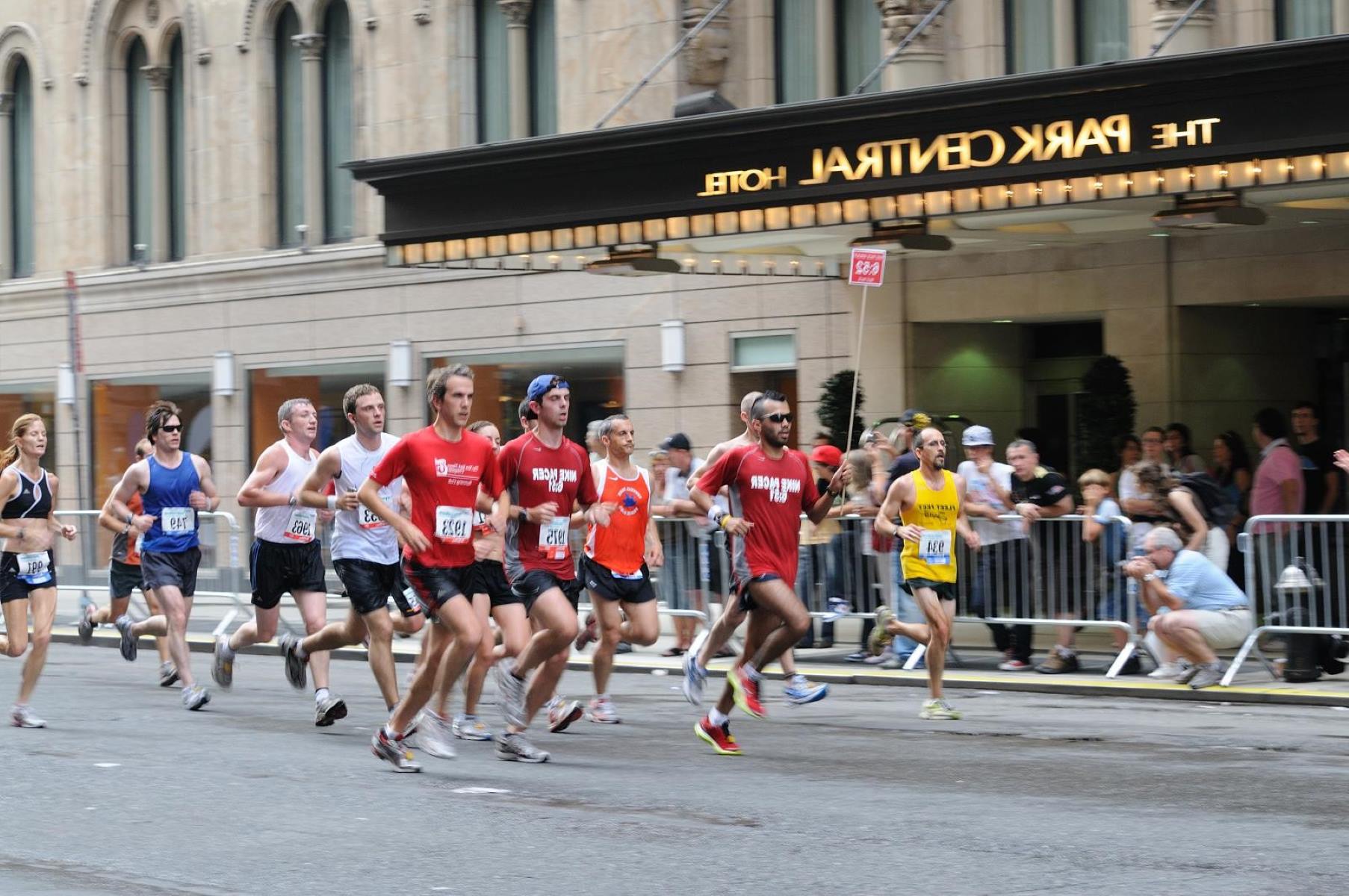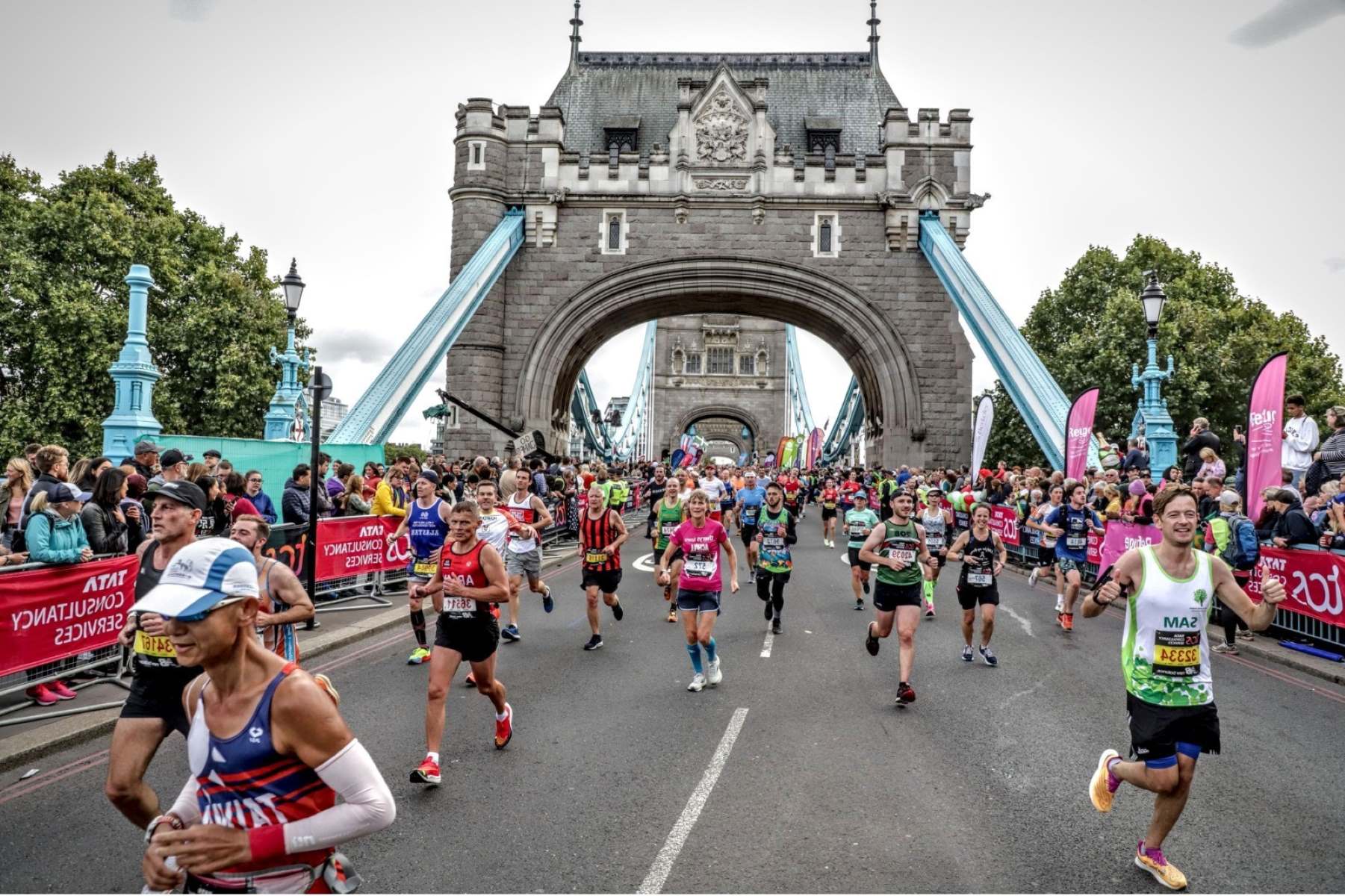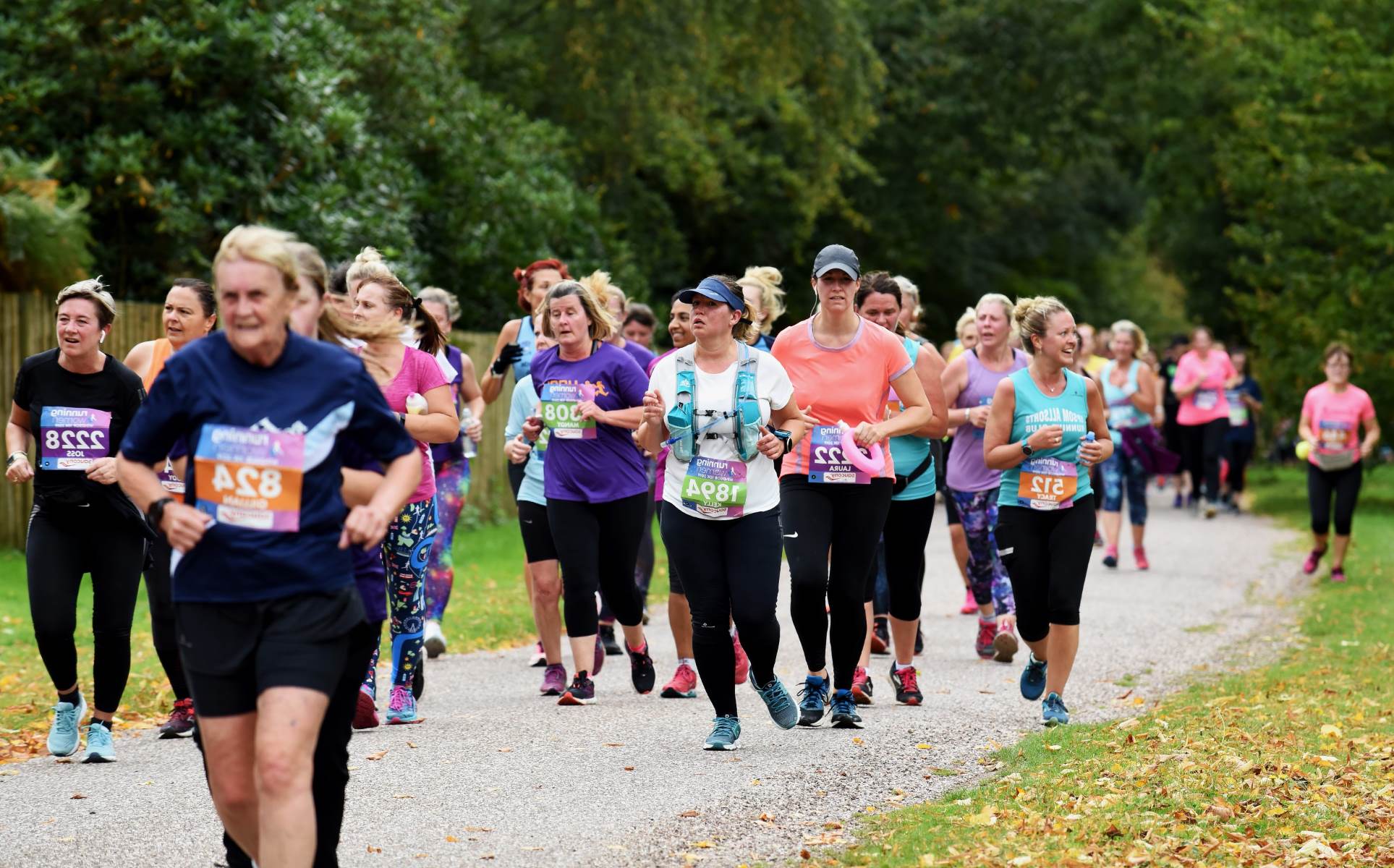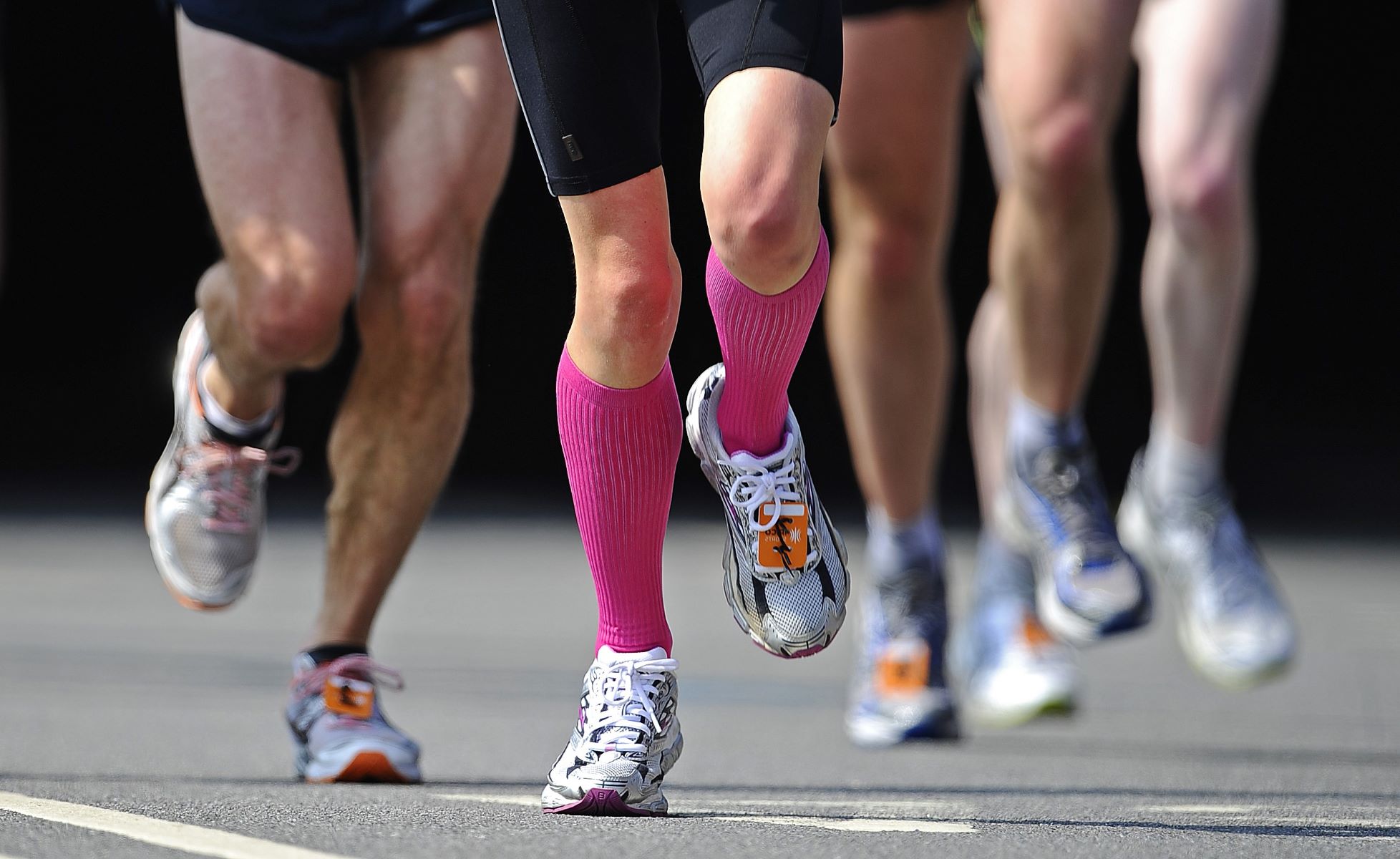Home>Training & Techniques>Important Information To Consider Before Participating In Your First Half Marathon


Training & Techniques
Important Information To Consider Before Participating In Your First Half Marathon
Published: March 3, 2024
Prepare for your first half marathon with essential training and techniques. Get important tips to ensure a successful race day.
(Many of the links in this article redirect to a specific reviewed product. Your purchase of these products through affiliate links helps to generate commission for Therunningadvisor.com, at no extra cost. Learn more)
Table of Contents
- Understanding the Physical Demands of a Half Marathon
- Selecting the Right Training Plan for Your Fitness Level
- Choosing the Proper Footwear and Clothing for Race Day
- Nutrition and Hydration Strategies for Half Marathon Training
- Mental Preparation and Goal Setting for Your First Half Marathon
- Injury Prevention and Recovery Techniques for Half Marathon Training
- Finding the Right Half Marathon Event for Your First Race
Understanding the Physical Demands of a Half Marathon
Participating in a half marathon is a significant physical endeavor that requires careful preparation and understanding of the demands it places on the body. A half marathon covers a distance of 13.1 miles, which translates to approximately 21 kilometers. This endurance race necessitates a high level of cardiovascular fitness, muscular endurance, and mental fortitude.
The physical demands of a half marathon are multifaceted, encompassing various aspects of fitness and endurance. Endurance is a key component, as runners need to sustain a steady pace over an extended period. This requires a well-conditioned cardiovascular system capable of efficiently delivering oxygen to working muscles. Additionally, muscular endurance is vital, as the repetitive motion of running places significant strain on the leg muscles, particularly the quadriceps, hamstrings, and calf muscles.
Moreover, the impact of running over such a distance can take a toll on the body, especially the lower limbs and joints. The repetitive pounding on hard surfaces can lead to muscle fatigue and joint stress, making it essential for runners to strengthen their lower body muscles and ensure proper form and technique to minimize the risk of injury.
Understanding the physical demands of a half marathon also involves recognizing the need for gradual progression in training. It is crucial to build up mileage and intensity gradually to allow the body to adapt and reduce the risk of overuse injuries. This gradual approach enables the body to strengthen muscles, tendons, and ligaments while improving cardiovascular endurance.
Furthermore, the mental aspect of half marathon training cannot be overlooked. Endurance events like half marathons require mental resilience and determination. Runners must prepare themselves to push through physical discomfort and mental fatigue, staying focused on their goals and maintaining a positive mindset throughout the race.
In essence, comprehending the physical demands of a half marathon involves acknowledging the need for a well-rounded training approach that addresses cardiovascular fitness, muscular endurance, injury prevention, and mental resilience. By understanding these demands and adequately preparing for them, aspiring half marathon runners can set themselves up for a successful and rewarding race experience.
Selecting the Right Training Plan for Your Fitness Level
Selecting an appropriate training plan tailored to your fitness level is a pivotal step in preparing for a half marathon. The training plan serves as a roadmap, guiding your progression from your current fitness level to the physical readiness required for the race. It is essential to choose a plan that aligns with your abilities, goals, and lifestyle, ensuring a balanced approach to training that minimizes the risk of injury and burnout.
When embarking on the journey of half marathon training, it's crucial to assess your current fitness level honestly. This evaluation should encompass not only your running capabilities but also your overall strength, flexibility, and endurance. Understanding your baseline fitness level allows you to select a training plan that challenges you appropriately without overwhelming your body.
For beginners, a novice training plan is often recommended, emphasizing gradual progression and a focus on building endurance. These plans typically incorporate a mix of running, walking, and rest days to acclimate the body to the demands of distance running. They also provide structured guidance on increasing mileage and intensity over several weeks, allowing for a safe and sustainable buildup of fitness.
Intermediate runners, who may have prior experience with shorter distances, can opt for a more advanced training plan that includes a balance of speed work, tempo runs, and long-distance runs. These plans aim to improve overall pace, endurance, and running economy, preparing intermediate runners to tackle the longer distance of a half marathon with confidence.
Advanced runners, who have a solid foundation of running fitness and experience, may benefit from a personalized or customized training plan. These plans are often tailored to the individual's strengths, weaknesses, and specific goals for the half marathon. They may incorporate periodization, cross-training, and targeted workouts to optimize performance and address any areas of improvement.
In addition to considering your current fitness level, it's essential to account for other commitments and responsibilities when selecting a training plan. Factors such as work schedules, family obligations, and personal time constraints should be taken into consideration to ensure that the chosen plan is realistic and sustainable within the context of your daily life.
Ultimately, the right training plan for your fitness level should strike a balance between challenging you to improve while preventing overtraining and burnout. It should be adaptable to accommodate unforeseen circumstances, such as illness or injury, and should prioritize rest and recovery as integral components of the training process.
By selecting a training plan that aligns with your fitness level and lifestyle, you can embark on your half marathon journey with confidence, knowing that you are following a structured and appropriate path toward achieving your race day goals.
Choosing the Proper Footwear and Clothing for Race Day
Selecting the appropriate footwear and clothing for race day is a critical aspect of half marathon preparation that directly impacts performance, comfort, and injury prevention. The right gear can enhance running efficiency, provide necessary support, and ensure comfort throughout the race. When it comes to footwear, choosing running shoes that suit your foot type, gait, and running style is paramount. Visiting a specialty running store for a gait analysis and professional fitting can help identify the most suitable shoes for your individual needs. Factors such as cushioning, stability, and flexibility should be considered to ensure optimal support and comfort over the 13.1-mile distance.
In addition to proper footwear, selecting the right clothing for race day is essential for comfort and performance. Moisture-wicking, breathable fabrics are ideal for running attire, as they help manage sweat and keep the body cool and dry. Avoiding cotton materials, which can retain moisture and lead to chafing, is advisable. Running-specific apparel, such as lightweight shorts, moisture-wicking tops, and supportive sports bras, can contribute to a more comfortable and enjoyable race experience.
Weather conditions on race day should also inform clothing choices. In cooler temperatures, layering with moisture-wicking base layers and lightweight jackets can provide warmth without sacrificing breathability. Conversely, in hot and humid conditions, opting for lightweight, ventilated clothing that allows for maximum airflow and sweat evaporation is crucial to prevent overheating and discomfort.
Furthermore, accessories such as moisture-wicking socks, a well-fitting hat or visor to shield from the sun, and sunglasses with UV protection can enhance comfort and protection during the race. It's important to test all race day clothing and gear during training runs to ensure proper fit, functionality, and comfort, minimizing the risk of chafing, blisters, or discomfort on race day.
Ultimately, choosing the proper footwear and clothing for race day involves a thoughtful consideration of individual needs, preferences, and environmental factors. By prioritizing comfort, functionality, and performance-enhancing features, runners can optimize their race day experience and focus on achieving their half marathon goals with confidence and ease.
Nutrition and Hydration Strategies for Half Marathon Training
Proper nutrition and hydration are integral components of half marathon training, playing a pivotal role in optimizing performance, supporting recovery, and sustaining energy levels throughout the rigorous training process. Implementing effective nutrition and hydration strategies can significantly impact an individual's ability to endure the physical demands of long-distance running and enhance overall race day experience.
Pre-Run Nutrition
Before embarking on a training run, it is essential to fuel the body with a balanced meal or snack that provides a combination of carbohydrates, protein, and healthy fats. Carbohydrates serve as the primary fuel source for endurance activities, supplying the muscles with glycogen for sustained energy. Opt for easily digestible carbohydrates such as whole grain toast, oatmeal, or fruit to fuel your run. Including a moderate amount of protein, such as yogurt or nut butter, can aid in muscle repair and recovery.
Hydration Before, During, and After Runs
Hydration is equally crucial, as adequate fluid intake supports optimal performance and helps prevent dehydration. Pre-run hydration should begin well in advance of the training session, ensuring that the body is adequately hydrated before hitting the pavement. During longer runs, especially in warm weather, it is essential to carry a water bottle or utilize hydration belts to replenish fluids and maintain hydration levels. Post-run, rehydration with water or electrolyte-rich beverages is vital to replace fluid losses and support recovery.
Fueling During Long Runs
For runs lasting longer than 60-90 minutes, incorporating mid-run fueling is essential to replenish glycogen stores and maintain energy levels. Portable, easily digestible sources of carbohydrates, such as energy gels, chews, or sports drinks, can provide a quick and convenient source of fuel during long training runs. Experimenting with different fueling options during training runs can help identify the most effective choices for race day.
Post-Run Recovery Nutrition
Following a long training run, prioritizing post-run nutrition is crucial for facilitating muscle recovery and replenishing energy stores. Consuming a balanced meal or snack containing a mix of carbohydrates and protein within 30-60 minutes post-run can aid in muscle glycogen replenishment and repair. Including sources of lean protein, such as chicken, fish, or plant-based alternatives, can support muscle recovery and adaptation.
Individualized Nutrition Planning
It is important to recognize that individual nutrition needs may vary based on factors such as body composition, metabolic rate, and dietary preferences. Consulting with a registered dietitian or sports nutritionist can provide personalized guidance on optimizing nutrition for half marathon training, ensuring that individual needs and goals are met.
By integrating effective nutrition and hydration strategies into half marathon training, runners can enhance their endurance, recovery, and overall performance, setting the stage for a successful and fulfilling race day experience.
Mental Preparation and Goal Setting for Your First Half Marathon
Mental preparation and goal setting are integral aspects of preparing for your first half marathon. While physical training is crucial, cultivating a resilient and focused mindset is equally essential for a successful race experience. As you embark on this journey, it's important to recognize the significance of mental preparation and establish clear, achievable goals that will guide your training and race day performance.
Setting specific, measurable, and realistic goals is a fundamental step in preparing for your first half marathon. These goals may encompass various aspects, including finishing time, pacing strategy, and personal milestones. By defining clear objectives, you can structure your training plan and approach each workout with purpose and determination. Additionally, establishing both short-term and long-term goals allows for incremental progress and provides a sense of accomplishment throughout the training process.
In addition to setting tangible goals, mental preparation involves cultivating a positive and resilient mindset. Endurance events like half marathons present physical and mental challenges, requiring mental fortitude to push through discomfort and fatigue. Implementing mental training techniques, such as visualization, positive self-talk, and mindfulness, can help build mental resilience and enhance focus during training and on race day.
Visualizing yourself crossing the finish line, overcoming challenging segments of the race, and maintaining a strong, steady pace can instill confidence and mental preparedness. Furthermore, incorporating positive self-talk, affirmations, and mantras into your training can reinforce a resilient mindset and help manage negative thoughts or doubts that may arise during the race.
Moreover, mindfulness practices, such as deep breathing, meditation, and mental relaxation exercises, can aid in managing pre-race nerves and promoting a calm, focused state of mind. By integrating these mental preparation techniques into your training routine, you can develop the mental strength and composure necessary to tackle the demands of a half marathon.
It's important to acknowledge that mental preparation is an ongoing process that evolves throughout your training journey. Embracing challenges, setbacks, and moments of doubt as opportunities for growth and learning can contribute to a resilient and adaptable mindset. Additionally, seeking support from fellow runners, coaches, or mentors can provide encouragement and perspective as you navigate the mental aspects of half marathon training.
In essence, mental preparation and goal setting are foundational elements of preparing for your first half marathon. By establishing clear, achievable goals and implementing mental training techniques, you can cultivate a resilient mindset that will support your training efforts and enhance your race day performance. As you progress through your training, remember that mental preparation is a continuous practice, and embracing the journey with determination and positivity will ultimately contribute to a fulfilling and successful half marathon experience.
Injury Prevention and Recovery Techniques for Half Marathon Training
Injury prevention and recovery techniques are paramount considerations for individuals undertaking half marathon training. The physical demands of long-distance running, coupled with the repetitive impact on the body, necessitate proactive measures to minimize the risk of injury and facilitate effective recovery. By integrating targeted strategies into their training regimen, runners can safeguard their well-being and optimize their readiness for the rigors of a half marathon.
Strength and Flexibility Training
Incorporating strength and flexibility exercises into a training routine is instrumental in fortifying the body against potential injuries. Strength training, focusing on the lower body muscles and core stability, can enhance muscular endurance and resilience, reducing the likelihood of overuse injuries. Additionally, targeted flexibility exercises, such as dynamic stretching and yoga, promote joint mobility and muscle elasticity, mitigating the risk of strains and imbalances.
Gradual Progression and Rest
Adhering to a gradual progression in mileage and intensity is crucial for injury prevention. Sudden spikes in training volume can predispose runners to overuse injuries, emphasizing the importance of a structured and incremental approach to building endurance. Furthermore, adequate rest and recovery periods are essential for allowing the body to adapt and repair. Rest days interspersed throughout the training schedule provide an opportunity for muscles to recover and regenerate, minimizing the accumulation of fatigue and reducing the likelihood of injury.
Proper Running Form and Technique
Focusing on proper running form and technique is a fundamental aspect of injury prevention. Maintaining good posture, a mid-foot strike, and an efficient arm swing can alleviate undue stress on the body and promote optimal biomechanics. Runners should be mindful of their stride length, cadence, and foot placement to minimize the impact on joints and muscles, thereby reducing the risk of overuse injuries.
Cross-Training and Recovery Modalities
Integrating cross-training activities, such as swimming, cycling, or low-impact aerobic exercises, can complement running training while reducing the repetitive strain on specific muscle groups. Additionally, incorporating recovery modalities, including foam rolling, massage therapy, and contrast baths, can aid in alleviating muscle tension, enhancing circulation, and expediting the recovery process. These modalities contribute to overall muscular health and injury prevention.
Listen to the Body
Attentiveness to the body's signals and cues is essential for injury prevention and recovery. Recognizing early signs of fatigue, discomfort, or pain and addressing them proactively can prevent minor issues from escalating into more significant injuries. It is imperative for runners to prioritize self-care, seek professional guidance when needed, and make informed decisions to safeguard their physical well-being throughout the training process.
By integrating these injury prevention and recovery techniques into their half marathon training, runners can foster resilience, minimize the risk of injury, and optimize their readiness for the race day challenge. Embracing a holistic approach to training that encompasses strength, flexibility, rest, and attentive self-care empowers individuals to pursue their half marathon goals with confidence and well-being at the forefront.
Finding the Right Half Marathon Event for Your First Race
Selecting the right half marathon event for your inaugural race is a pivotal decision that can significantly influence your overall race day experience. With a myriad of half marathon events held worldwide, each offering unique courses, atmospheres, and logistical considerations, it's essential to carefully evaluate various factors to ensure that the chosen event aligns with your goals, preferences, and readiness for the challenge.
Read more: Determining An Optimal Half Marathon Time
Location and Course Characteristics
The location and course characteristics of a half marathon event play a substantial role in determining its suitability for first-time participants. Consider whether you prefer a scenic, urban, or trail-based course, taking into account the terrain, elevation changes, and potential weather conditions. Additionally, evaluating the accessibility of the event's location, including travel logistics and accommodation options, can contribute to a seamless and stress-free race experience.
Event Size and Atmosphere
The size and atmosphere of a half marathon event can greatly impact the overall ambiance and support available to participants. Larger events may offer a bustling, energetic atmosphere with extensive spectator support, while smaller races can provide a more intimate and community-oriented feel. Assessing your comfort level with crowd sizes and the type of race day atmosphere that motivates and inspires you is essential in selecting an event that aligns with your preferences.
Timing and Scheduling
Carefully consider the timing and scheduling of the half marathon event in relation to your training timeline and personal commitments. Ensuring that the race date allows for adequate preparation and recovery within your training plan is crucial. Additionally, accounting for any potential conflicts with work, family, or other obligations can help mitigate stress and ensure that you can fully immerse yourself in the race day experience.
Support and Amenities
Exploring the support and amenities offered by the event organizers can provide insight into the level of care and assistance available to participants. Factors such as aid stations, medical support, post-race refreshments, and participant perks can contribute to the overall satisfaction and comfort of race day. Evaluating the event's commitment to participant well-being and enjoyment can guide your decision-making process.
Personal Goals and Expectations
Ultimately, aligning the chosen half marathon event with your personal goals and expectations is paramount. Whether you aspire to achieve a specific finishing time, immerse yourself in a vibrant race day atmosphere, or conquer a challenging course, ensuring that the event resonates with your aspirations and motivations can enhance your overall race day experience.
By thoughtfully considering these factors and conducting thorough research on potential half marathon events, you can identify the race that best suits your preferences, goals, and readiness for your first half marathon. Embracing the process of selecting the right event can contribute to a memorable and fulfilling race day experience, setting the stage for a successful foray into the world of half marathon running.











